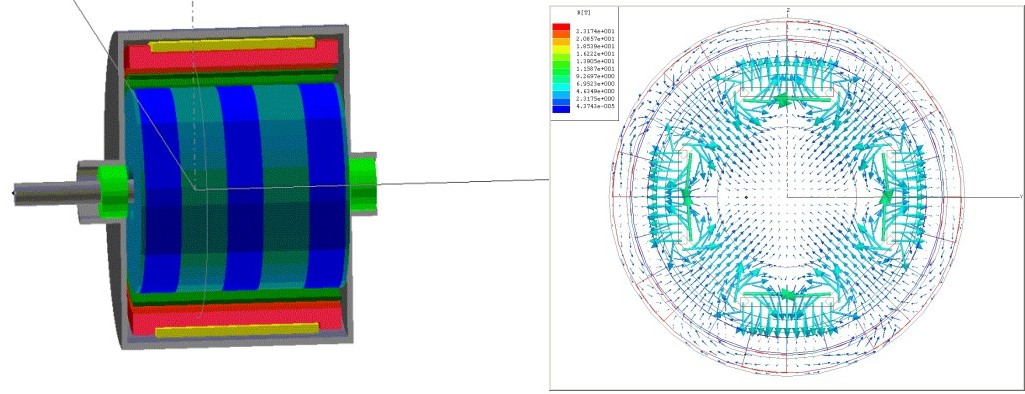This effort is geared towards the development of very compact, high power density, superconducting (HTS) electric motors for mobile applications. The research is being funded by the NASA/DoD URETI (link to: http://www.grc.nasa.gov/WWW/AERO/base/URETI/) on Aeropropulsion and Power Technology (UAPT) (link to: http://www.asdl.gatech.edu/teams/ureti/), a joint effort with Georgia Tech and Ohio State University.
All-electric aircraft exhibit high system efficiency and therefore would enable Unmanned Aero Vehicles (UAV) to achieve long missions with no need of landing. One application of interest to NASA is the development of a High Altitude Long Endurance (HALE) hurricane tracker capable of flying at least 14 days without landing. In such a system, efficiency and power density are paramount, and High Temperature Superconducting (HTS) technology along with fuel cells using pure hydrogen cryogenically stored are considered. Our team is working on the design of an HTS electric motor and its liquid hydrogen cooling system. The aircraft system study is performed in collaboration with NASA Glenn Research Center and the Aerospace Systems Design Laboratory at Georgia Tech.

NASAs zero-emission aircraft concept
As part of the NASA/DoD sponsored UAPT, this project aims at increasing power density and efficiency of electrical motors through the use of high temperature superconductors (HTS). The overall objective is to develop technology enabling the development of all-electric aircraft. So far we designed a superconducting motor five times more power dense than conventional motors to drive a general aviation aircraft. The original eight-pole motor is cooled down to 30K by conduction and uses a Gifford-McMahon cryocooler. The electrical propulsion system is more efficient than combustion engines and is approximately half the weight. The developed motor is small enough to be embedded into the propeller thus freeing space in the aircraft for the cooling system and the power generation system. All-electric aircraft is a new concept and therefore conventional design tools can no longer be used. All-electric aircraft synthesis software is being developed at Georgia Tech utilizing physics-based models. One of our tasks is to provide Georgia Tech researchers with high fidelity models for superconducting motors, electrical components, and power generation systems. Once the requirements for the propulsion system are determined, the motor design process can start. We use finite element analysis software (ANSOFT Maxwell) to simulate and optimize the motor design. Superconducting motors require operation at cryogenic temperature, therefore the design of the cooling system is very important. After performing a thermal analysis of the conduction cooling apparatus, results are experimentally validated in the Center for Advanced Power Systems laboratory. A thermal mock-up of the motor has been fabricated, connected to a G-M cryocooler and tested in a vacuumed cryostat. Such a cooling system does not require any liquefied gas and is highly reliable. Current research focuses on higher power level applications such as transportation aircraft or HALE aircraft.

